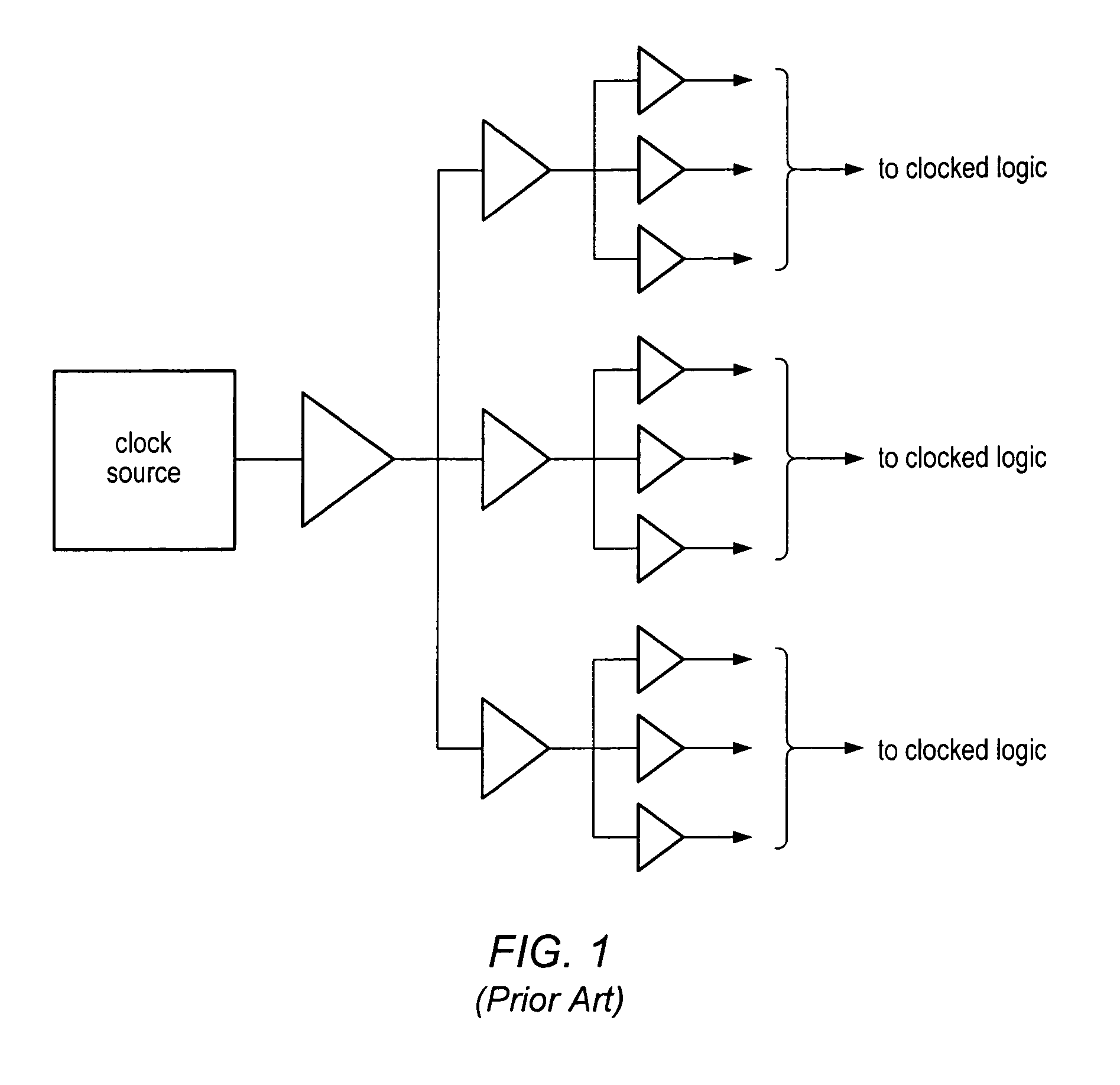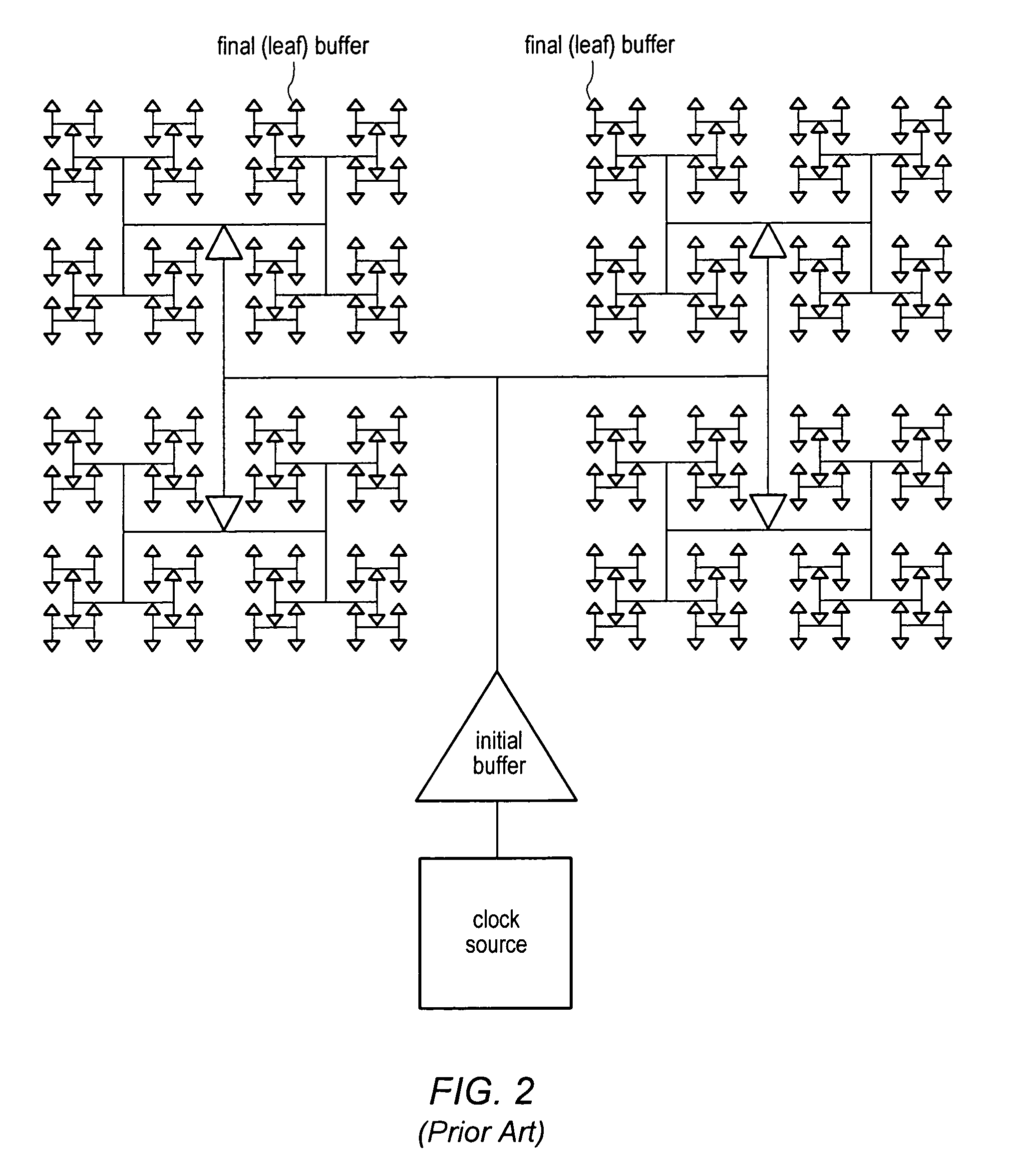Clock grid driven by virtual leaf drivers
a virtual leaf driver and clock grid technology, applied in the field of integrated circuits, can solve the problem of limiting the operating frequency of the ic, and achieve the effects of ensuring synchronization, normalizing the amount of clock signal skew experienced, and reducing the maximum skew between points on the clock grid in the region surrounding the virtual leaf driver nodes
- Summary
- Abstract
- Description
- Claims
- Application Information
AI Technical Summary
Benefits of technology
Problems solved by technology
Method used
Image
Examples
Embodiment Construction
[0027]In many IC designs, the area devoted to clock tree buffers may be limited and therefore the number of groups of leaf buffers available to drive clock grid lines may also be limited. Examples of such designs may be complex microprocessors or multi-core processor chips. At the same time it may be desirable to include many clock grid lines in these designs in order to minimize the average distance from a clock consuming functional block to a clock grid connection point. It may also be desirable to operate such ICs at the maximum possible clock rate, thus minimizing the design's tolerance for clock skew. In some embodiments, the use of virtual leaf driver nodes may allow a leaf buffer to drive a number of clock grid lines with minimal skew between the different clock grid lines.
[0028]FIG. 5 illustrates a technique for routing the output of a leaf buffer to clock grid elements that may reduce clock signal skew between different points on the clock grid, according to one embodiment....
PUM
 Login to View More
Login to View More Abstract
Description
Claims
Application Information
 Login to View More
Login to View More - R&D
- Intellectual Property
- Life Sciences
- Materials
- Tech Scout
- Unparalleled Data Quality
- Higher Quality Content
- 60% Fewer Hallucinations
Browse by: Latest US Patents, China's latest patents, Technical Efficacy Thesaurus, Application Domain, Technology Topic, Popular Technical Reports.
© 2025 PatSnap. All rights reserved.Legal|Privacy policy|Modern Slavery Act Transparency Statement|Sitemap|About US| Contact US: help@patsnap.com



